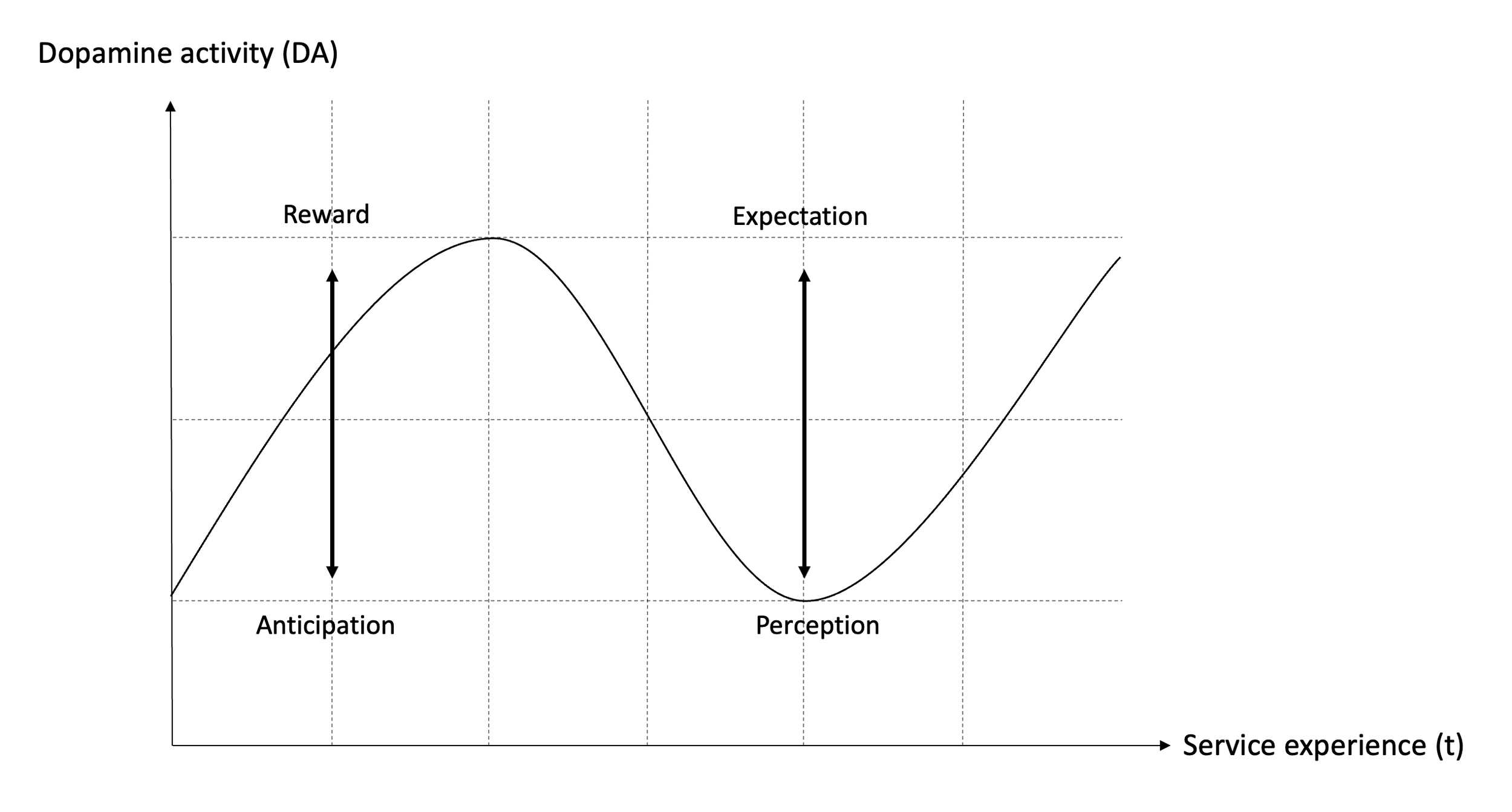
Neuropsychology of consumers.
Proprietary toolkit enables a unique consumer mindset and creates passion brands.
Brand strategy
Neuroscience
Is it healthy for a brand to trigger impulse purchases?Short answer: No.
Psychology
Introduction
My thesis at WHU Otto Beisheim School of Management was titled “A neuronal approach to consumer behavior and brand positioning”. I explored the inner depth of biological and psychological responses to brands.
Process
Combining literature reviews on biological, neuropsychological, and psychological phenomena around neurotransmission and consumer psychology, I analyzed different allies of decision-making, brand perception, and customer satisfaction.
Outcome
Main findings are the divergent roles of neurotransmitters. These reveal excessive dopamine (DA) focus by brands resulting in unsustainable customer satisfaction over time. I conceptualized my research implications into visual graphics and guiding frameworks for brands.
Mindset in business practice
This mindset impacts how I approach strategy and branding in business practice and shapes my narrative as a creative strategist. The following frameworks are explicit examples of a holistic toolkit I have developed in the field of cognitive neuroscience and brand building, supporting sustainble customer satisfaction and brand loyalty.
As a strategist, I help brands to identify their brand positioning and support them in strategically transforming into the upper quadrant.
Gratification-Satisfaction Matrix
The Gratification-Satisfaction Matrix divides brands into Impulse, Attraction, Goal, and Passion, along the dimensions of time-based gratification and emotional responses.
Impulse brand: Brand offering the rapid satiation of impulsive urges via easy purchase. (Example: Ubereats)
Attraction brand: Brand that facilitates arousal and particular satisfaction (Example: Casinos)
Goal brand: Brand that supports customers in achieving a tangible goal. (Example: Weightwatchers).
Passion brand: Brand that facilitates both gratification and satisfaction, creating consistent feelings of reward and trust. These brands operate on a “lifestyle” basis, focusing on community, credibility, and competence. (Example: Nike)
Dopamine fluctuation in services
This timeline demonstrates the irrelevancy of absolute dopamine (DA) in strategic design. The key to sustainable customer motivation lies in the relative reward based on individual expectations. Each perception transforms into a new expectation over time. This visualizes the idea that brands require alternating DA, further neurotransmitters such as oxytocin (OXT) and serotonin (ST), and a clear grasp on their competition in order to balance the perception and motivation in brand experiences over time.




